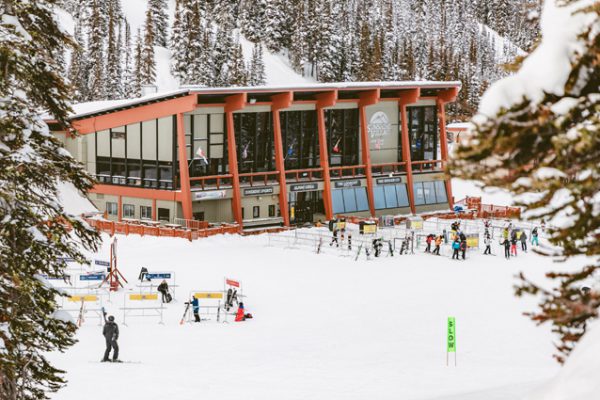Dave Armstrong is the guy who really runs the iconic Alberta resort.
You came to Sunshine Village to ski. You assumed the “Village” moniker was a metaphor. But as you wait for the first gondola, the entire Utilities Department roars up in the dark on a snowmobile. Stopping at various buildings along the way they check the systems crucial to the 280 residents and more than half a million annual visitors. Sunshine’s Utilities Department is a team of two, and for the last 23 years it’s been run by Dave Armstrong.

Starting your day on the Standish chairlift, you’ll ski by a series of tiny lakes. You may see Armstrong there dunking a dipstick to check the reservoir levels. The depth is controlled and adjusted to maintain water pressure and make sure that hotel guests can have a shower on the fourth floor while staff do laundry and the restaurants prep lunch.
Down slope, and you’ll be skiing too fast to see it, the discreet building behind the hotel is the water treatment plant where Armstrong oversees “filtration and chlorination. The water source is as good as it gets,” says Armstrong. It’s a national park, after all. Aside from the odd bear taking a bath in the summer, it’s “really clean water.”
Armstrong started working in Sunshine’s parking lot in 1993, then the warehouse, transportation and security departments before taking over the utilities in 1997. “Sunshine is his life,” says Armstrong’s lone employee and utilities teammate, Matt Jasper. “If he’s not working at the plant, he’s off helping other departments. He’s full of knowledge and has a great demeanor, even when shit hits the fan.” (More about that in a moment.) “He laughs, takes everything in stride and deals with it, very calculated.” Calculating is actually a big part of the job.
Skiing out at the end of the day, you’ll pass the waste treatment plant, whether you know it or not. “Wastewater treatment is the majority of the job,” Armstrong explains. “The water that [enters the village] is clean. Making the water that goes out clean is the real work.” So while you’re enjoying the sun and snow, Armstong will be in the lab testing and monitoring.
Unlike most communities, Sunshine sees wild swings in the number of “villagers” flushing a toilet—from fewer than 1,000 one day to more than 5,000 the next. The process is biological and bacteria must be grown in advance. “Christmas rush, Easter rush, March break, all those peak times require the most monitoring,” says Armstrong. “We plan a week out and go over the charts and skier-visit predictions.”
Certainly a more exciting side of the village is firefighting, and Armstrong oversees that, too. Every community needs their heroes in uniform, and if you have a dozen buildings being heated and inhabited, you need a fire department. “We keep 14 active people and I teach a basic-level firefighting course, which gives them a certificate recognized internationally.”
When you do see Armstrong on skis, it will likely be with his kids, aged 9 and 12, who have practically grown up at Sunshine. Tiny skis and young minds find different runs, and after decades of skiing here Armstrong is getting a new vantage on the village. “They are taking me places at Sunshine I have never even skied before,” he says.
As you continue your ski day, you might be looking for a hidden powder stash of your own. If you explore the glades behind the propane tanks on the ski-out, you may sidestep past Armstrong. He’ll be checking the four massive 400,000-litre tanks that feed fuel to the village.
After your run, as you ski down to après, Armstrong might buzz past on his way to Goat’s Eye Gardens to prepare the overnight work. “Goat’s Eye doesn’t have any piping systems to it, so all the water and wastewater are hauled in the evening by snowcat. Along with propane and diesel.” As you finish your beer and start walking to the car, you may see Armstrong one last time. He’ll be checking the septic and fuel levels at the Bourgeau base area before finally calling it a day. Give him a high-five as you go but wear gloves—remember, he’s also the Sunshine honey dipper.




